Moving from Livestock Grazing To Broadleaf Woodland – a sustainability opportunity?
David Brown uses Bron Haul as a case study to explore whether land use change from livestock grazing to broadleaf woodland could help the Welsh Government deliver sustainability goals.
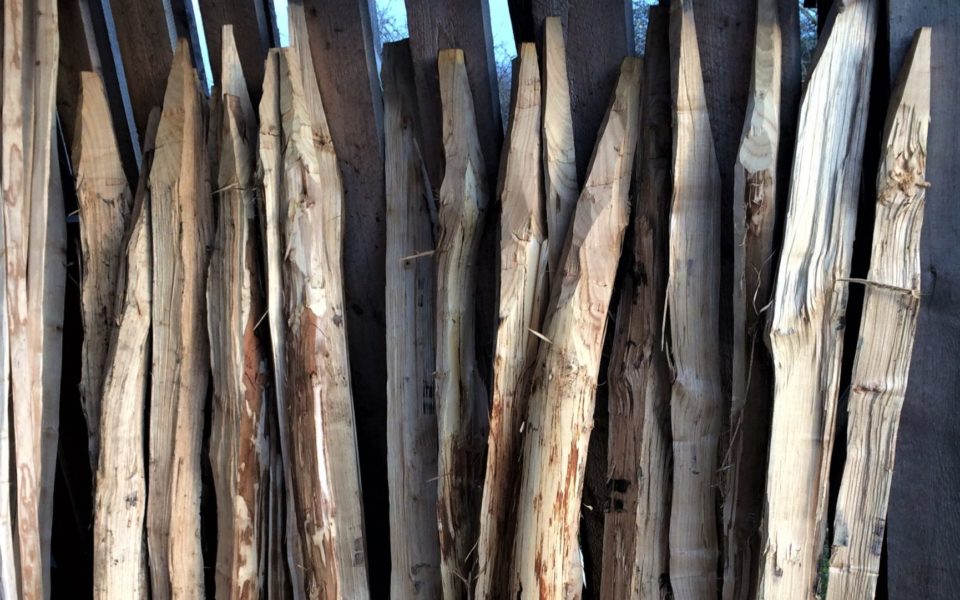
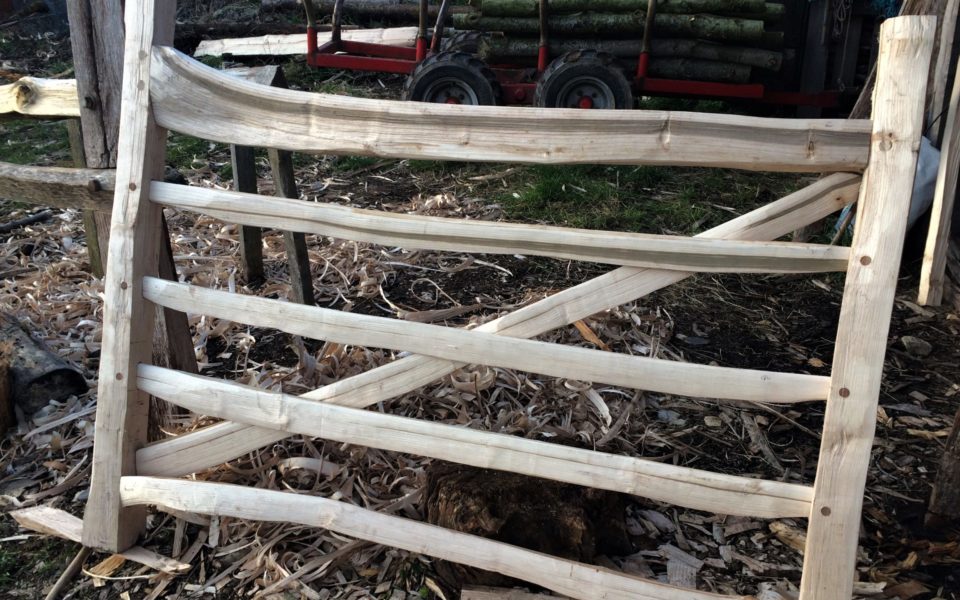
The following is the summary of a dissertation submitted in partial fulfilment for the MSc in Forestry, Bangor University, by David Brown who together with Ruth Pybus won the Excellence in Forestry Small and Farm Woodland Award in 2015 for their Bron Haul wood at Abergele, Conwy.
Does Brexit Provide An Opportunity For The Welsh Government To Deliver Its Sustainability Goals Through Land-Use Change From Livestock Grazing To Broadleaf Woodland? A Case Study
Study context and aims
The mixed broadleaf woodland at Bron Haul was planted as an intimate mixture in the 1990s on land previously used to graze sheep. It has been managed for multiple objectives including biodiversity, landscape, shelterbelt, carbon sequestration and for the production of high-quality timber. It was planted and managed with support from government grant schemes and has received awards for the quality of its management from the RFS and RWAS.
This land-use change from livestock to woodland is in line with the Welsh Government (WG) sustainability goals laid out in the Wellbeing of Future Generations (Wales) Act 2015. As Wales faces Brexit and is released from Common Agricultural Policy (CAP) rules, it is consulting on how payments to land managers should be redirected toward achieving its sustainability goals.
| Bron Haul woodland is used here as a case study to quantify:
1 the cost to the public purse of effecting land-use change favouring woodland over ruminant livestock agriculture 2. the carbon benefits of replacing ruminant agriculture with well-managed mixed broadleaf woodland 3. the timber provisioning potential of appropriately managed mixed broadleaf woodland |
1 The cost to the public purse of effecting land-use change favouring woodland over ruminant livestock agriculture
Woodland has been funded by replacing agricultural support (that makes no financial demand on land managers), with woodland grants (that are mostly a contribution to real costs). CAP payments have been a barrier to land-use change.
Bron Haul has received £111,469 over 23 years to support tree planting and establishment, two cycles of management operations and to compensate for livestock exclusion. Using IBERS Farm Survey data, it was estimated that £96,603 of agricultural subsidy would have been received on this land if it had remained as sheep grazing receiving support under CAP. The afforestation of land at Bron Haul has so far cost the WG little more than would have been spent on agricultural payments (figure 1).
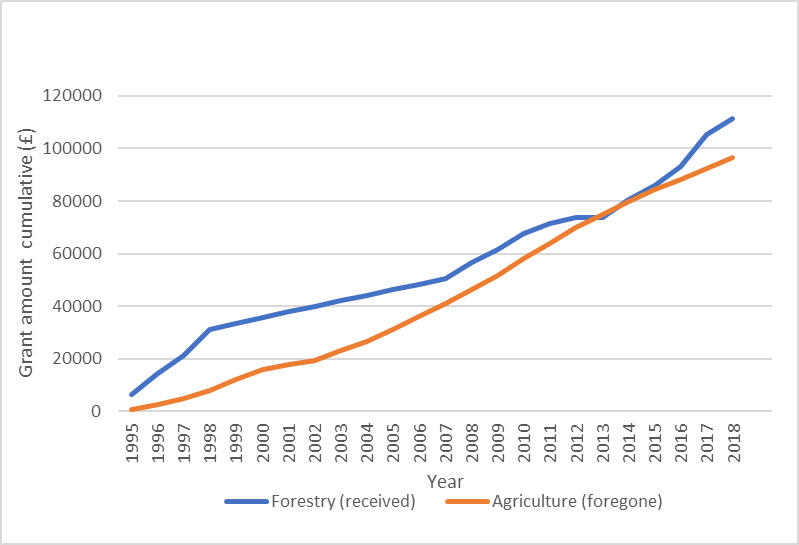
Figure 1 above: Comparison of cumulative government support for woodland creation and management at Bron Haul compared to estimated agricultural subsidy that the land would have received if it had continued as sheep grazing
It should be noted that Bron Haul was lucky to receive generous funding under Glastir Woodland Management until 2018. This scheme was open for only a short time, and without it, the cumulative woodland grant income would have frozen in 2013 at £73,590.
2. The carbon benefits of replacing ruminant agriculture with well-managed mixed broadleaf woodland
Land-use change from livestock to woodland has provided greenhouse gas (GHG) benefits through carbon sequestration as well as by removing GHG emissions associated with livestock production.
Using the Forestry Commission’s Carbon Assessment Protocol (Jenkins et al, 2018), the carbon currently sequestered in the woodland is estimated at 206.6tC02e/ha. This is in addition to the carbon sequestered in thinnings, increased soil carbon and the displacement of greenhouse gases associated with livestock production. Using data from scientific literature, estimates of these additional carbon benefits of replacing livestock with woodland are summarised in the table below.
 |
3. The timber provisioning potential of appropriately managed mixed broadleaf woodland
Broadleaf woodland managed under continuous cover forestry (CCF) can produce a continuous high-quality timber resource. There is evidence from French research that once established CCF woodland is economically viable, as well as delivering a variety of public goods.
Providing that the current high-quality woodland management at Bron Haul continues, the harvesting of the first saw logs, suitable for enduring end use, is predicted to commence 34 years after planting. From then on, the woodland should yield regular income from high quality timber grown under a continuous cover management regime, realising the WG vision for resilient, genuinely multi-purpose woodland (Figure 2).
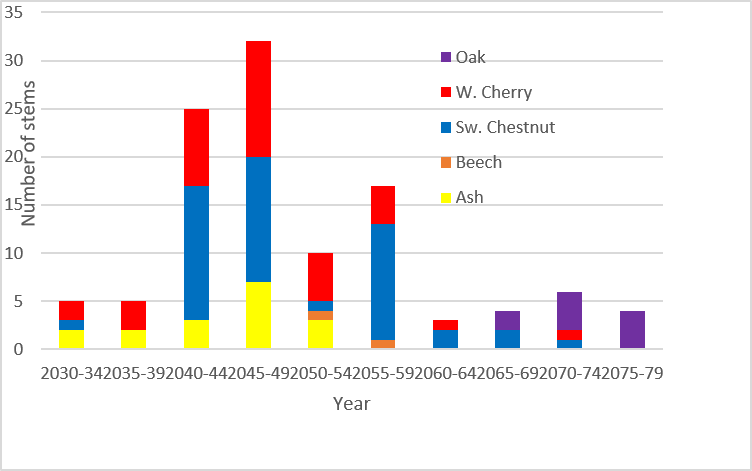
Figure 2 above: Estimated harvesting years for timber stems from 1.2ha of broadleaf woodland planted in 1996 (AH, ash; BE, beech; SC, sweet chestnut; WCH, wild cherry; OK, oak)
This has been achieved through;
- Planting an intimate mix of site suitable species
- Formative and high pruning of many stems
- Timely and frequent thinning
- Rigorous control of grey squirrels
CCF using predominantly broadleaf, site native species is well established in France, where the Association Futaie Irreguliere (AFI), founded in 1990, have established permanent reference plots in a network of over 80 research woodlands. Their strategies and outcomes, including evidence for the economic viability of irregular forestry once it is fully converted to CCF are documented (Susse et al. 2011). This network is slowly extending into the UK through SelectFor, who provide training in CCF conversion and monitoring practices as informed by the AFI.
Damage to young trees by grey squirrels and deer as well as browsing of natural regeneration by deer remain the main threats to broadleaf woodland and their successful control needs to be a priority to make this sustainable approach to productive woodland silviculture mainstream.
References
IBERS (2018). https://www.aber.ac.uk/en/ibers/research-and-enterprise/fbs/. Accessed 29/01/2019.
Jenkins, T.A.R., Mackie, E.D., Matthews, R.W., Miller, G., Randle, T.J. & White, M.E. (2018) FC Woodland Carbon Code – Carbon Assessment Protocol. Forestry Commission.
Susse R., Allegrini, Ch., Bruciamacchie, M. & Burrus, R. (2011). Management of Irregular Forests. Besançon: Association Futaie Irrégulièr. (English translation by Phil Morgan).
For a copy of the full dissertation, please contact david.brown40@hotmail.co.uk
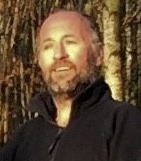
David Brown
Since winning the Excellence in Forestry Award, a second round of thinning and pruning has been completed at Bron Haul under the Glastir Woodland Management scheme, as well as further construction of access tracks.
A third round of thinning has started, with a concentration on management for continuous cover. A hundred, evenly spaced, ‘Stems with a Future’ per hectare are being selected on the basis of stem quality, vigour, and maintaining species diversity. Selected stems are being allowed to commence free growth with competing trees removed to allow rapid crown expansion. The site increment is being concentrated into the selected stems with the aim of maintaining the basal area within a target range of 14-21m2/ha.
The value of thinnings has increased and the woodland is being used as a study site by two Bangor University PhD students studying deer impacts and behaviour. It is also a training site for delivering grey squirrel control courses.

